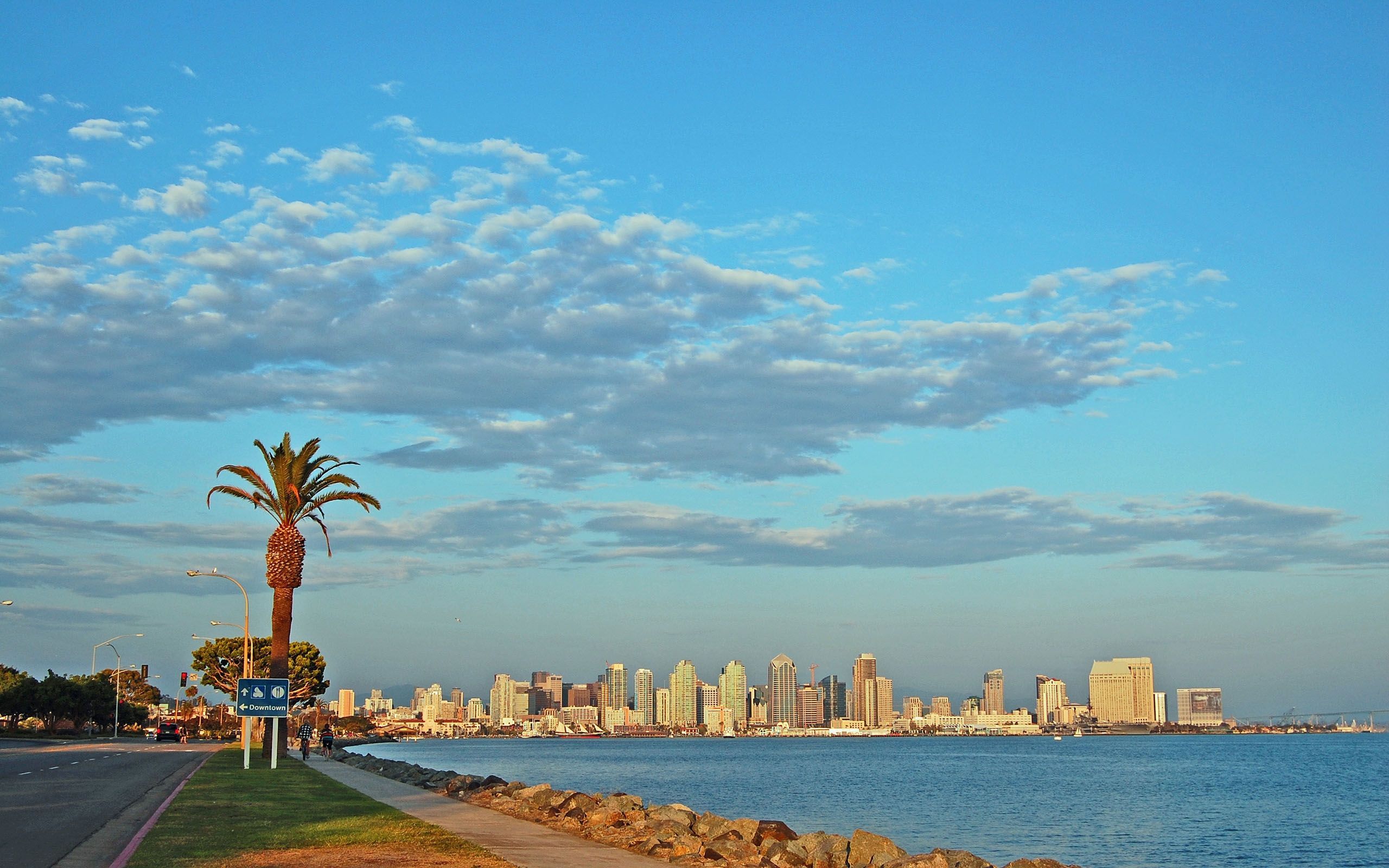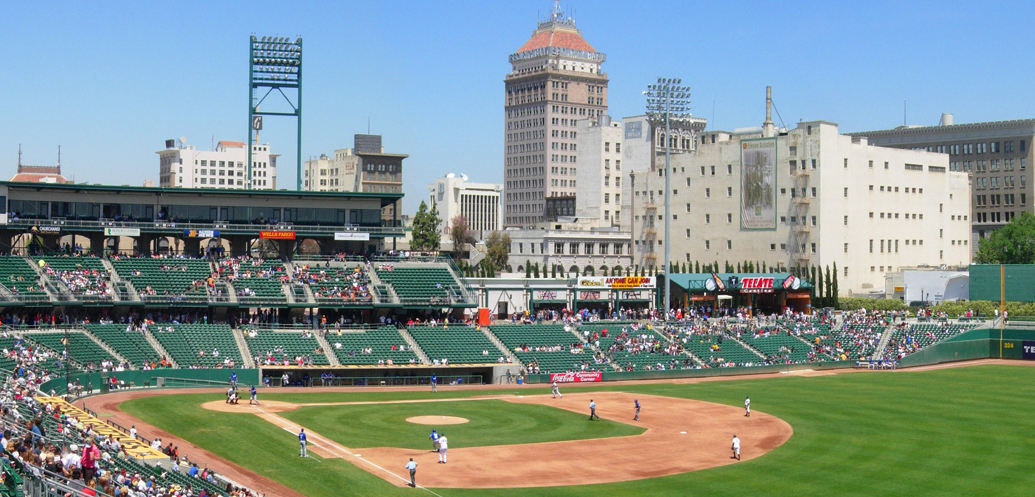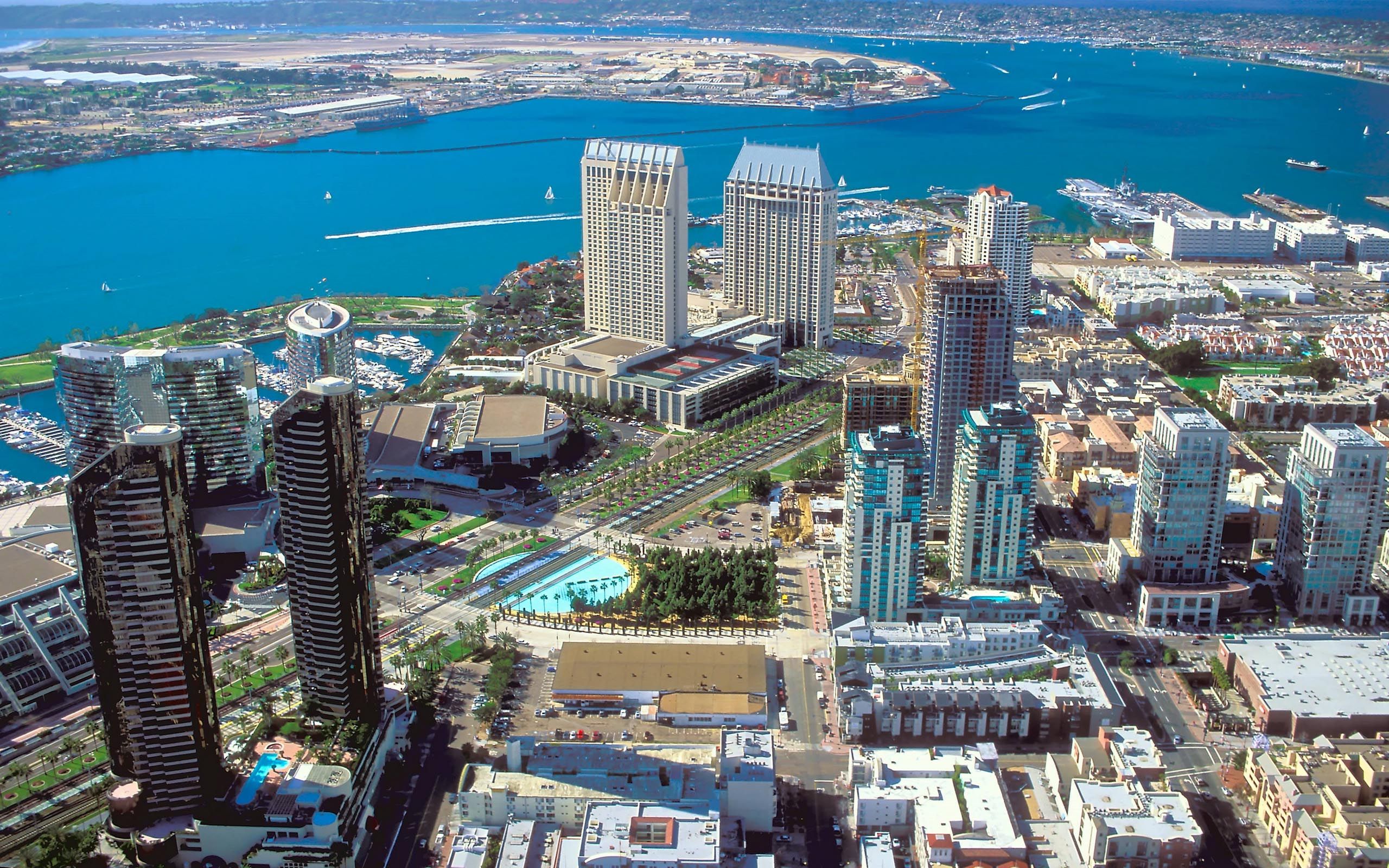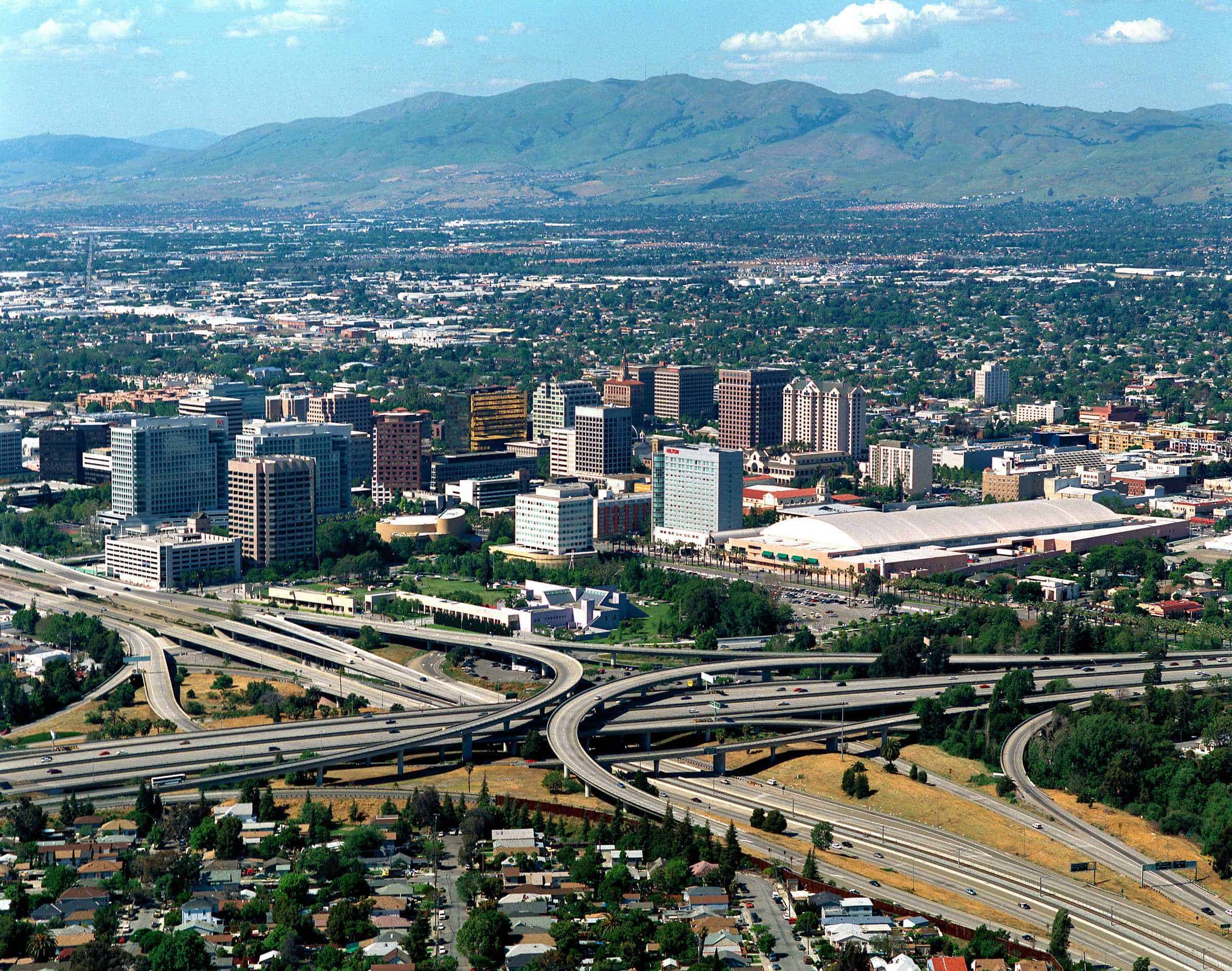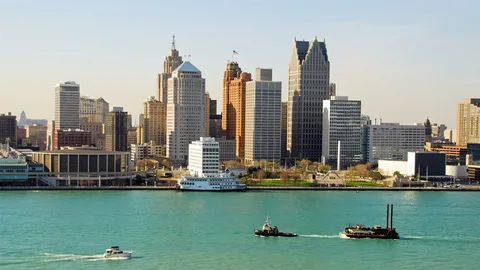City Size and Population
Metro Area Rankings
The state of California is home to some of the most populous cities in the United States, with several metropolitan areas boasting a significant number of residents.
To rank the largest cities in California by population and metro area size, we will examine the data from the United States Census Bureau for 202 The rankings are based on the population of the city proper (not the metropolitan area) and the metropolitan area’s total population.
Top 10 Largest Cities in California by Population
- Los Angeles, CA – population: approximately 3.99 million
- San Diego, CA – population: approximately 1.42 million
- San Jose, CA – population: approximately 1.01 million
- San Francisco, CA – population: approximately 883,000
- Fresno, CA – population: approximately 542,000
- Sacramento, CA – population: approximately 495,000
- Long Beach, CA – population: approximately 467,000
- Oakland, CA – population: approximately 440,000
- Bakersfield, CA – population: approximately 394,000
- Anaheim, CA – population: approximately 351,000
Top 10 Largest Metropolitan Areas in California by Population
- Los Angeles-Long Beach-Anaheim, CA Metro Area – population: approximately 13.2 million
- San Francisco-Oakland-Hayward, CA Metro Area – population: approximately 4.7 million
- San Diego-Chula Vista-Carlsbad, CA Metro Area – population: approximately 3.3 million
- Riverside-San Bernardino-Ontario, CA Metro Area – population: approximately 2.5 million
- Sacramento-Roseville-Arden-Arcade, CA Metro Area – population: approximately 2.6 million
- San Jose-Sunnyvale-Santa Clara, CA Metro Area – population: approximately 2.0 million
- Fresno, CA Metro Area – population: approximately 1.1 million
- Bakersfield-Delano, CA Metro Area – population: approximately 943,000
- Stockton-Lodi, CA Metro Area – population: approximately 779,000
- Oxnard-Thousand Oaks-Ventura, CA Metro Area – population: approximately 843,000
These rankings provide insight into the significant urbanization and population growth in California over recent decades. The large metropolitan areas have contributed to the state’s economic growth and cultural diversity.
The city size and population are crucial factors to consider when determining the largest cities in a particular state or region. In the context of California, the most populous and largest city by area is Los Angeles.
Los Angeles has a total land area of approximately 502.7 square miles (1,300 km2), making it one of the largest cities in the United States by land area. The city’s population, as of 2020, is estimated to be around 3.99 million people.
The second-largest city in California by both size and population is San Diego, which covers a total area of about 325 square miles (843 km2) and has a population of approximately 1.42 million people.
San Jose, the capital of Silicon Valley, ranks third on the list with an area of around 176.5 square miles (457 km2) and a population of over 1 million residents.
The size of cities can be measured in various ways, including their land area, population density, or economic output. Population density, in particular, is often used as an indicator of the level of urbanization in a city.
While Los Angeles and San Diego are larger in terms of land area and population, they also have higher population densities compared to some other cities in California. The city’s high population density can lead to increased urban sprawl and strain on public services such as transportation and infrastructure.
The population growth rates in large cities like Los Angeles and San Diego often vary due to factors such as migration trends and economic conditions. Understanding the size and population dynamics of cities is crucial for policymakers, urban planners, and residents seeking to plan for the future development of these cities.
Riverside San Bernardino Ontario: The third largest metropolitan area in California, with a population of over 4 million people.
The San Bernardino-Riverside-Ontario metropolitan area, commonly referred to as the Inland Empire, is a significant urban agglomeration located in southern California.
This vast metropolitan area is situated in the eastern part of Los Angeles County and encompasses several surrounding counties, including Riverside, San Bernardino, and Ontario.
The population of the Inland Empire metropolitan region exceeds 4 million people, making it the third most populous metropolitan area in California, after Los Angeles and San Francisco Bay Area.
Spanning over 27,000 square miles, this vast urban sprawl is characterized by a diverse geography, ranging from rugged mountains to fertile valleys and expansive deserts.
The metropolitan region consists of several major cities, including Riverside, San Bernardino, Ontario, Rancho Cucamonga, Fontana, and Moreno Valley.
These cities offer a wide range of cultural experiences, recreational activities, and economic opportunities, attracting residents from diverse backgrounds and industries.
The Inland Empire’s economy is driven by a mix of sectors, including logistics, manufacturing, technology, education, and healthcare, making it an attractive location for businesses and entrepreneurs.
The region’s rich history, cultural diversity, and scenic natural beauty make the San Bernardino-Riverside-Ontario metropolitan area an important part of California’s urban landscape.
Fresno: Home to over 930,000 people, the Fresno metropolitan area is known for its agricultural production and cultural events.
The city size and population of Fresno play a significant role in making it one of the most important urban centers in California. With a population of over 930,000 people, the Fresno metropolitan area is not only a major hub for agriculture but also a center for cultural events and activities.
The large size of the city and its surrounding metropolitan area enable Fresno to be a significant contributor to the state’s economy. The region’s agricultural production is one of the main drivers of the local economy, with major crops including grapes, cotton, and almonds.
In terms of population growth, Fresno has experienced steady expansion over the years. The city’s population has grown by more than 10% since the year 2000, making it one of the fastest-growing cities in California. This rapid growth is attributed to various factors, including migration from other parts of the state and the country.
Despite its large size, Fresno has managed to maintain a relatively high quality of life for its residents. The city has invested heavily in public parks and green spaces, such as Woodward Park and Roeding Park, providing opportunities for recreation and relaxation. Additionally, Fresno is home to several cultural institutions, including the Fresno Philharmonic and the Fresno Art Museum.
In terms of urban planning, Fresno’s city size presents unique challenges. The city has implemented various initiatives aimed at improving traffic flow and reducing congestion, such as the construction of new roads and highways. However, the city continues to face issues related to transportation and air quality, which are major concerns for residents and policymakers.
Overall, the large population and significant size of Fresno make it an important urban center in California, with a diverse economy and rich cultural scene. While the city faces challenges related to growth and infrastructure development, its unique characteristics position it as a vibrant and dynamic place to live and work.
San Diego: With a diverse economy and strong tourism industry, San Diego has a population of approximately 3.3 million people.
San Diego, located on the west coast of the United States, has a significant population and economy driven by diverse industries.
The city’s location in San Diego County, combined with its proximity to Mexico, makes it an important hub for trade and commerce.
San Diego is also home to several major military bases, including the Naval Base San Diego and Marine Corps Air Station Miramar, which contribute to the city’s economy and population growth.
Key Demographics of San Diego:
- Population: Approximately 3.3 million people
- Population density: About 4,000 people per square mile
San Diego is also a major tourist destination, with many attractions such as the world-famous San Diego Zoo and Balboa Park.
The city’s tourism industry brings in significant revenue each year, contributing to the overall economic growth of the area.
In addition to its strong economy and tourism industry, San Diego is known for its mild climate and natural beauty, making it an attractive place to live and visit.
Economic Breakdown of San Diego:
- Tourism
- Technology
- Biotechnology
- Manufacturing
- Largest employers
- Healthcare and social services
- Education
- Retail trade
San Diego’s diverse economy and strong tourism industry make it one of the top cities in California in terms of population and economic growth.
The city continues to be a popular destination for businesses, tourists, and residents alike, with its unique blend of natural beauty, cultural attractions, and economic opportunity.
The concept of city size and population is a fascinating topic that can provide valuable insights into urbanization, economic growth, and quality of life.
Cities are often measured in terms of their geographical area or land area, which is the total amount of space occupied by a city within its defined boundaries.
The population of a city, on the other hand, refers to the number of people living within that city’s boundaries at a given time.
There are several ways to calculate the size and population of cities, including the use of census data, municipal records, and estimates based on factors such as housing density and employment rates.
In the context of California, where urbanization is a significant trend, understanding city size and population can help policymakers and planners address issues related to infrastructure development, resource allocation, and environmental sustainability.
For example, cities with large populations may require more resources for transportation, education, healthcare, and public services, whereas smaller cities may have limited economies of scale and face challenges related to accessibility and affordability.
In terms of the 10 largest cities in California, as discussed in the article, cities like Los Angeles and San Diego have large land areas and high populations due to their long histories as major urban centers and their proximity to economic hubs, such as ports and airports.
Other larger cities, like San Jose and Sacramento, have smaller land areas but higher population densities due to their status as Silicon Valley’s hub for tech companies and the state capital, respectively.
The size and population of a city can also influence its economy, with larger cities often having more diverse industries and higher GDPs, while smaller cities may rely on local services or specialized manufacturing sectors.
Furthermore, the growth rate of cities can impact their social and economic development, as rapid expansion can strain infrastructure, housing markets, and public services, whereas slower growth rates may allow for more sustainable urban planning and community engagement.
Understanding the complex relationships between city size and population is essential for creating effective policies that promote urban sustainability, equity, and prosperity in California and beyond.
Economic Drivers
Tech Hubs and Business Centers
The concept of economic drivers, tech hubs, and business centers has become increasingly prominent in modern urban planning and development.
In the context of California’s largest cities, these entities serve as catalysts for growth, innovation, and job creation, while also enhancing the quality of life for residents and visitors alike.
Economic drivers refer to the underlying factors that stimulate economic activity within a region.
These can include factors such as a strong entrepreneurial spirit, access to capital, a skilled workforce, and favorable business environments.
In California’s largest cities, economic drivers are often associated with the presence of tech industry giants, startups, and incubators, which foster innovation and entrepreneurship.
For instance, Silicon Valley in San Jose is renowned for its high concentration of tech companies and venture capital firms, creating a self-sustaining ecosystem that drives growth and attracts talent from around the world.
Meanwhile, downtown Los Angeles has emerged as a hub for creative industries such as film, music, and gaming, leveraging its vibrant arts scene and diverse population to stimulate economic activity.
Tech hubs are specialized areas within cities that concentrate on specific industries or technologies, providing resources and infrastructure tailored to the needs of these sectors.
Examples of tech hubs in California’s largest cities include San Francisco’s South of Market neighborhood, which is home to numerous fintech and biotech startups, as well as Los Angeles’s Arts District, where digital media companies have established themselves amidst a thriving arts scene.
Business centers, on the other hand, are areas within cities that provide office space, amenities, and services specifically designed for businesses, including coworking spaces, meeting facilities, and networking opportunities.
In California’s largest cities, business centers often serve as incubators or accelerators for new ventures, providing essential support and resources to help companies grow and succeed.
For example, the WeWork complex in San Francisco’s SoMa neighborhood offers a range of coworking spaces, meeting rooms, and networking events tailored specifically to the needs of startups and entrepreneurs.
In Los Angeles’s downtown area, the City National Plaza building serves as a business center that provides high-end office space, amenities, and services to businesses and organizations.
Overall, economic drivers, tech hubs, and business centers in California’s largest cities represent key components of their growth strategies and urban development plans.
By fostering innovation, entrepreneurship, and job creation, these entities help drive economic activity, enhance quality of life, and reinforce the state’s position as a hub for industry and commerce.
The Economic Drivers behind the growth and development of the 10 largest cities in California are multifaceted and varied. From the tech hub of Silicon Valley to the tourism industry in Los Angeles, each city has its own unique set of economic drivers that contribute to its success.
In San Diego, the biotechnology industry is a significant driver of the economy, with many major players such as Biogen and Celgene having operations in the city. The port of San Diego also plays a crucial role in the city’s economy, handling over 1 million containers per year.
On the other hand, Los Angeles is driven by the entertainment industry, with many major film studios and music production companies based in the city. The tourism industry is also a significant contributor to the local economy, with millions of visitors flocking to LA each year to visit iconic attractions such as Universal Studios Hollywood and Griffith Observatory.
In contrast, San Jose has emerged as a major tech hub, thanks in part to its proximity to Stanford University. The city is home to many major technology companies, including Apple, Facebook, and Google, making it one of the most competitive job markets in the world.
Fresno’s economy is driven by agriculture, with the San Joaquin Valley producing over 25% of the country’s fruit, nuts, and dairy products. The city is also a major hub for the transportation industry, with several major highways passing through the city.
Sacramento, the state capital, has a diverse economy that includes government services, tourism, and agriculture. The city is also home to many major companies in the healthcare and technology industries.
The Long Beach port is one of the busiest in the world, handling over 8 million containers per year. The city’s economy is driven by international trade, with many major shipping companies based there.
Oakland, located across the Bay Bridge from San Francisco, has a diverse economy that includes manufacturing, logistics, and tourism. The Port of Oakland is one of the largest container ports in the country.
Bakersfield has a strong economy driven by agriculture, with many major farms based in the surrounding area. The city is also home to several major oil fields, making it a hub for the energy industry.
Anaheim, located in Orange County, has a diverse economy that includes tourism, technology, and healthcare. The city is home to Disneyland, one of the world’s most iconic theme parks.
The Stockton area is experiencing growth due to its strategic location on the I-5 corridor, making it an ideal location for logistics and transportation companies. The city also has a strong focus on agriculture and manufacturing.
The San Francisco Bay Area is home to Silicon Valley, the tech capital of the world and one of California’s biggest economic drivers.
The San Francisco Bay Area is a significant contributor to the state’s economy, with Silicon Valley being a major driving force behind California’s growth and development. The region is home to many top tech companies, including Apple, Google, Facebook, and Tesla, among others, which are headquartered or have major operations in the area.
Silicon Valley is considered one of the world’s leading hubs for innovation and technology, with a highly skilled workforce and a strong entrepreneurial spirit. The region is also known for its vibrant startup scene, with many incubators and accelerators providing resources and support to new companies.
The San Francisco Bay Area’s economy is not limited to tech alone. Other major industries, such as finance, healthcare, education, and tourism, also contribute significantly to the region’s economic growth. The Port of Oakland, one of the largest container ports in the United States, is another key driver of the regional economy.
The Bay Area is also home to some of the world’s top-ranked universities, including Stanford University and the University of California, Berkeley, which provide a highly skilled workforce for the tech industry. The region’s strong educational institutions are also a major draw for new businesses and talent.
Furthermore, the San Francisco Bay Area’s proximity to the Pacific Ocean and its mild climate make it an attractive location for companies in industries such as biotechnology, renewable energy, and advanced manufacturing.
The economic impact of Silicon Valley on California is significant, with many studies estimating that the region generates tens of billions of dollars in revenue each year. The region’s influence extends beyond California, with its innovative spirit and entrepreneurial culture inspiring new businesses and industries across the globe.
Los Angeles has a diverse economy, with major industries including entertainment, technology, healthcare, and international trade.
- The Los Angeles metropolitan area has a diverse economy with various industries contributing to its growth and development.
- The entertainment industry is one of the major drivers of the LA economy, accounting for over $120 billion in economic output annually.
- Los Angeles County is home to Hollywood, Universal City, Warner Bros., Paramount Pictures, Disney, and other major film studios.
- The city also serves as a hub for international trade, with the Port of Los Angeles being one of the busiest ports in the United States.
- The technology industry has emerged as a significant sector in LA, with companies like Google, Facebook, and Snapchat having offices in the city.
- Healthcare is another major industry in LA, with hospitals and medical research facilities contributing to the economy.
LA’s strong tourism industry also generates billions of dollars in revenue each year, thanks to its iconic attractions such as beaches, theme parks, and cultural institutions.
The city’s diverse economy has made it a magnet for businesses and entrepreneurs from around the world, attracting over $1.4 trillion in investment over the past decade alone.
Key statistics about LA’s economy include:
- Economic output: Over $1.2 trillion annually
- Average annual salary: Over $63,000
- GDP per capita: Over $64,000
- Unemployment rate: Lower than the national average
These figures demonstrate LA’s position as a hub for economic activity and growth in California.
The city’s economy is driven by its diverse industries, including entertainment, technology, healthcare, international trade, tourism, and more.
Sacramento, the state capital, is known for its growing startup scene and innovation in fields such as clean energy and water management.
Sacramento, the state capital of California, has become a hub for economic growth and innovation. One of the key drivers of this growth is the city’s thriving startup scene.
The city’s startup ecosystem is supported by a range of organizations and initiatives, including the Sacramento Area Council on Economic Development (SACED) and the City of Sacramento’s Startup Accelerator Program. These programs provide resources and funding to entrepreneurs and startups, helping them to grow and scale their businesses.
In addition to its thriving startup scene, Sacramento is also a leader in innovation in fields such as clean energy and water management. The city has made significant investments in renewable energy sources, including solar and wind power, and has implemented initiatives to reduce greenhouse gas emissions.
One example of this commitment to sustainability is the city’s goal to become 100% renewable by 205 To achieve this goal, Sacramento has set targets for reducing energy consumption and increasing the use of renewable energy sources.
The city has also made significant investments in water management, including the construction of a new water treatment plant that will provide clean drinking water to residents. This investment is not only good for the environment but also supports economic growth by providing a reliable source of water for businesses and industries.
Other key drivers of economic growth in Sacramento include the city’s strong tourism industry and its growing arts and culture scene. Visitors from around the world come to Sacramento each year to experience the city’s rich history, cultural attractions, and natural beauty.
The city is also home to a range of major industries, including healthcare, education, and technology. These industries provide jobs and opportunities for residents and help drive economic growth in the region.
The economic drivers of the 10 largest cities in California are a complex mix of factors, influenced by various internal and external elements.
Population Growth: The large populations of these cities create a significant market for goods and services, driving consumer spending and business demand.
- Tech Industry: Cities like San Jose and San Francisco have become hubs for the tech industry, with companies such as Apple, Google, and Facebook having headquarters or major operations in the Bay Area.
- The growth of the tech industry has led to an influx of highly skilled workers, further fueling economic activity and innovation.
- Tourism: The state’s iconic destinations, such as Disneyland in Anaheim and Yosemite National Park, attract millions of visitors each year, generating significant revenue for local economies.
- Additionally, the mild climate and diverse cultural attractions make California a popular tourist destination, driving growth in industries like hospitality and entertainment.
- Fintech and Clean Tech: Cities like Los Angeles and San Diego have become hotspots for fintech and clean tech startups, leveraging their access to talent, venture capital, and government support.
- This has led to the development of new industries and job opportunities in areas such as renewable energy, sustainable infrastructure, and financial technology.
- International Trade: The Port of Los Angeles and the Port of Oakland are two of the busiest ports in the United States, facilitating international trade and economic exchange between California and other regions worldwide.
- The state’s strong trade relationships with Asia, Latin America, and Europe drive economic growth through imports and exports of goods such as agricultural products, electronics, and machinery.
- Agriculture: California is a leading producer of fruits and nuts, accounting for 99% of the US production of avocados and 95% of the world’s almonds.
- The state’s agriculture industry supports thousands of jobs and generates billions of dollars in revenue each year, making it an essential component of the California economy.
- Diversification: The economies of these cities are also driven by a diverse mix of industries, including healthcare, education, government services, manufacturing, and logistics.
This diversification helps to mitigate risks and ensure that the economic growth is sustainable over time.
Overall, the economic drivers of the 10 largest cities in California are shaped by a complex interplay of internal and external factors, making the state’s economy highly dynamic and resilient.
Diversity and Cultural Significance
Language and Ethnic Diversity
The state of California is renowned for its incredible diversity, encompassing a vast array of languages, ethnicities, and cultures that shape the fabric of its cities.
Culturally significant to Californians is the city of Los Angeles, where numerous languages are spoken by residents, including English, Spanish, Chinese, Tagalog, Korean, and Armenian. These diverse languages contribute to LA’s cosmopolitan atmosphere and reflect the city’s global influence.
San Diego, with its own rich cultural heritage, boasts a significant Hispanic population that speaks primarily in English and Spanish. Other prominent ethnic groups include Asian Americans, African Americans, Native Americans, European Americans, Filipino Americans, and Pacific Islanders.
The city of San Jose also offers a diverse linguistic landscape, where the primary languages spoken are English, Spanish, Tagalog, Mandarin Chinese, Vietnamese, Japanese, Korean, and Arabic. This remarkable diversity has turned San Jose into the heart of Silicon Valley’s technological innovation.
Another notable city in California with significant cultural significance is San Francisco. With over 50% Asian population residing within its borders, the city boasts an exceptional linguistic tapestry, consisting mainly of English, Chinese, Spanish, Tagalog, Vietnamese, and Russian languages spoken by residents.
These cities are indicative of the linguistic diversity found in California’s urban areas. While English is predominantly used as a common language among the population, regional dialects and accents have evolved through diverse cultural influences. The presence of these varied ethnic groups has shaped California’s architecture, cuisine, art forms, media, and values, turning its cities into culturally enriching experiences for both locals and visitors alike.
As people from various backgrounds converge on California’s urban centers, a truly remarkable blend of cultures emerges, ultimately contributing to the state’s distinctive identity. This dynamic environment fosters innovative collaborations, creative outputs, and inclusive spaces that honor and celebrate California’s rich tapestry of languages and ethnic diversity.
The linguistic makeup of its cities contributes significantly to California’s cultural landscape, serving as a melting pot where various identities converge and intersect. These diverse cultures thrive in the state’s largest cities, making it one of the world’s most culturally diverse places.
Diversity is a fundamental aspect of human society, encompassing the unique experiences, perspectives, and backgrounds that make individuals distinct from one another.
In the context of California’s largest cities, diversity takes on a multifaceted character, shaped by various factors such as ethnicity, language, culture, socioeconomic status, and lifestyle choices.
Cities like Los Angeles, San Diego, and San Jose are renowned for their cultural melting pots, where people from diverse backgrounds coexist in an intricate web of relationships, influencing one another’s experiences and contributing to the richness of the urban tapestry.
The diversity of California’s largest cities can be observed through various demographic markers, such as language. For instance, Los Angeles is home to speakers of more than 220 languages, making it one of the most linguistically diverse cities in the world.
Culturally, cities like San Francisco and Oakland are hubs for vibrant artistic expressions, from street art to live music performances, reflecting the creativity and resilience of their residents.
Furthermore, California’s largest cities have made significant strides in promoting cultural inclusivity, such as through initiatives aimed at preserving the history and legacy of underrepresented communities, including the development of cultural centers, museums, and festivals celebrating diverse backgrounds.
In terms of socioeconomic diversity, California’s largest cities feature a wide range of neighborhoods with varying income levels, from affluent enclaves to working-class communities. This economic diversity has fostered innovation and entrepreneurship, as individuals from different socio-economic backgrounds bring unique perspectives to the table.
Finally, the cultural significance of California’s largest cities can be seen in their ability to shape public discourse on issues such as identity politics, social justice, and environmental sustainability, often influencing national conversations and policy decisions.
In summary, the diversity and cultural significance of California’s largest cities are essential components of their identities, fostering creativity, inclusivity, and innovation while serving as models for other urban centers to strive towards.
San Jose’s population reflects California’s cultural diversity, with a significant number of residents speaking non English languages at home.
The city of San Jose serves as a prime example of how diversity can shape and enrich the cultural identity of an urban center.
The population of San Jose has been influenced by people from various parts of the world, leading to a unique blend of cultures that is reflective of California’s overall cultural landscape.
One notable aspect of San Jose’s population is the significant number of residents who speak non-English languages at home, underscoring the city’s position as a hub for diverse linguistic and cultural backgrounds.
The presence of residents speaking non-English languages at home can be attributed to several factors, including the city’s history as an immigration gateway for people from Latin America and Asia.
San Jose has become a melting pot where cultures from different parts of the world have come together, blending their customs, traditions, and languages into a distinct cultural tapestry that is characteristic of California as a whole.
The city’s diverse population has also been shaped by its economic environment, with the presence of tech industry giants such as Intel and Cisco Systems contributing to an influx of workers from various countries, particularly India and China.
San Jose’s diversity extends beyond linguistic backgrounds, with residents representing a wide range of ethnicities, including Hispanic or Latino, Asian Indian, Chinese, Korean, Vietnamese, Filipino, Mexican, Japanese, Russian, Polish, and many others.
The city’s cultural significance is further amplified by its vibrant arts scene, which celebrates the rich tapestry of cultures that make up San Jose’s population.
From museums showcasing diverse art forms to festivals highlighting specific ethnic traditions, San Jose’s cultural landscape offers a unique blend of global perspectives and experiences that shape the identity of the city and its residents.
Furthermore, San Jose has taken steps to recognize and celebrate the contributions made by its diverse population, with initiatives such as the city’s Diversity Week celebrations aimed at promoting cross-cultural understanding and exchange.
In conclusion, San Jose’s cultural significance is deeply rooted in its diversity, which reflects California’s overall cultural landscape and provides a unique opportunity for residents to engage with and learn from different cultures.
The Los Angeles metropolitan area is the most linguistically diverse urban region in the world, according to research by the University of Southern California.
- The Los Angeles metropolitan area is a melting pot of cultures, languages, and ethnicities, making it one of the most linguistically diverse urban regions in the world.
- This diversity can be attributed to its rich history of immigration, dating back to the early 20th century when people from various parts of the globe flocked to LA in search of a better life.
- Today, the city is home to over 4.3 million foreign-born residents, speaking more than 220 languages at home, according to research by the University of Southern California (USC).
- The diversity of languages spoken in LA reflects its cultural significance as a global hub for international trade, commerce, and entertainment.
Here are some interesting facts about the linguistic diversity of Los Angeles:
- The top 10 languages spoken at home in LA County include Spanish, Mandarin Chinese, Korean, Tagalog, Vietnamese, English, Arabic, Japanese, Russian, and German.
These languages are a testament to the city’s global influence and its role as a gateway to the Pacific Rim and Latin America.
The linguistic diversity of LA has also contributed to the city’s economic growth and development, with many international businesses and industries establishing themselves in the area.
In addition to its economic benefits, the cultural significance of Los Angeles’ diversity is evident in its vibrant arts and cultural scene, which celebrates the traditions and customs of its diverse populations.
From the annual LA County Fair to the numerous festivals celebrating Latin American, Asian, and European cultures, there’s no shortage of cultural events that showcase the city’s rich heritage.
The linguistic diversity of Los Angeles is not only a reflection of its history and culture but also a symbol of its commitment to inclusivity and diversity.
As the city continues to grow and evolve, it will be exciting to see how this diversity shapes its future and contributes to its ongoing transformation as a global hub for innovation and creativity.
Diversity and cultural significance are vital aspects of any city, and in a state as large and populous as California, these factors play an especially important role.
The Golden State is renowned for its unique blend of cultures, with influences from across the globe, from Latin America to Asia, Europe, Africa, and more.
Within this context, the 10 largest cities in California offer a fascinating tapestry of cultural experiences, reflecting the state’s rich diversity.
Key Cities:
San Jose: Home to the largest Chinese population outside of Asia, San Jose boasts a vibrant Chinatown and numerous Asian restaurants and markets.
San Diego: A city with strong Mexican and Latin American roots, San Diego proudly celebrates its diverse heritage through various cultural festivals and events throughout the year.
Cultural Significance in California’s Largest Cities:
- Food: California is famous for its culinary diversity. You can find authentic Korean BBQ in Los Angeles, delicious Szechuan hot pot in San Francisco, and traditional Mexican cuisine in cities like Fresno and San Diego.
- Museums: Many of California’s largest cities are home to world-class museums that showcase art, history, science, and culture. The Getty Museum in Los Angeles, the de Young Museum in San Francisco, and the Crocker Art Museum in Sacramento are just a few examples.
- Arts and Performance: California’s cities offer an incredible range of performing arts venues, from the Hollywood Bowl to the San Francisco Symphony. The state is also home to numerous art festivals, such as the San Jose Museum of Art’s annual festival celebrating art in public spaces.
- Cultural Festivals: Each year, cities across California celebrate their diverse cultural heritage through vibrant festivals. These events bring communities together, promoting unity and understanding while showcasing unique traditions, music, and cuisine.
The Role of Cultural Significance in California’s Largest Cities:
- Cultural significance plays a vital role in shaping the identity and character of California’s largest cities.
- By embracing their diverse cultural heritage, these cities foster a sense of community and belonging among residents from various backgrounds.
- Moreover, cultural festivals, art events, and museums help promote cross-cultural understanding, breaking down barriers and celebrating the unique traditions that make California’s largest cities so special.
In conclusion, diversity and cultural significance are at the heart of what makes California’s 10 largest cities so unique and fascinating. These elements bring people together, promoting a sense of community and unity while celebrating the rich tapestry of cultures that define our state.
- America’s Most Conservative Cities - September 4, 2024
- 14 Prettiest Towns In Wyoming - September 3, 2024
- Countries That Start With The Letter V - September 3, 2024

